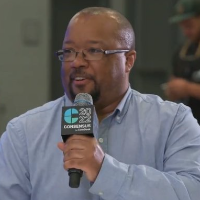


Behind every successful cryptocurrency lies blockchain technology. Blockchain makes cryptocurrencies like Bitcoin, Litecoin, Ethereum, XRP, DOGE, and thousands of others possible. Simply put, a blockchain is a ledger that records data such as transactions. Unlike traditional databases, which typically are stored on a single computer or server, a blockchain is spread across the internet on as many computers as can download that blockchain’s data removing a central point of an attack or failure.
While Bitcoin and Ethereum, launched in 2009 and 2015, are the most widely known and used blockchains, blockchain’s history goes back to the cypherpunk movement of the 1990s when computer scientists and hackers began to explore using cryptography in code.
The most popular types of blockchains are Permissionless and Permissioned Blockchains.
Permissionless blockchains like Bitcoin and Ethereum are blockchains anyone can use without any notice or gatekeeping from the creators. Characteristics of a permissionless blockchain are fully decentralized, transparent, immutable, and secured by cryptography.
Permissioned blockchains are primarily used by businesses and organizations and require authorization for users to access this blockchain. Permissioned blockchains can be customized for an organization’s specific needs. Permissioned blockchain tends to be faster and most scalable than permissionless, but a permissioned blockchain is not entirely decentralized.
With blockchain data stored in each block, that data is repeated to a connecting block, and so on. What makes blockchain unique and unlike traditional databases, a hacker could not merely change the data in a block; they would need to change the data in all of the blocks; otherwise, the system would fail.
For an excellent introduction to blockchain, check out George Levy’s course on Udemy.com, “Blockchain and Bitcoin Fundamentals,” to learn more about blockchain.
To see a blockchain transaction, you need to use a service like Etherscan or Blockchain.com’s Explorer. Copy and paste the address used, and the service will provide information on the transactions that address were involved in, including how many confirmations the transaction has completed.
Many desktop and mobile wallets include this ability so that users can see their transactions’ status.
Who is using blockchain today? We are, but major players in business and finance are also using blockchain. Forbes lists its “Blockchain 50” every year to showcase those currently using blockchain; this list only includes companies that generate no less than $1 billion annually or be valued at least at $1 billion.
An example of how blockchain can be used: A rare book collector searched for a hard-bound first edition, and it’s rumored that only five exist, but they see six books when they go to the auction. The publisher maintains a blockchain database of all of its books, so the catalog and how many books are in circulation are available to the public.
The collector checks this and finds that there are only five copies of the book listed on the blockchain. The blockchain’s data shows the publishing date, the ISBN, the author, and how many books are circulating. The collector can see and verify that one of the books being auctioned is a fake.
With blockchain, a person looking to change the data and mix their book with the authentic ones would need to change the blockchain’s data and every block that followed, which is nearly impossible.
The blockchain rabbit hole is bottomless, and this article is just scratching the surface. So why learn about blockchain? While knowing how a blockchain works is not necessary to buy, use, sell, or store bitcoin, it’s good to understand how the system makes bitcoin works.

Share This Article
Join 10,000+ forward thinkers! Get crypto education in your inbox.